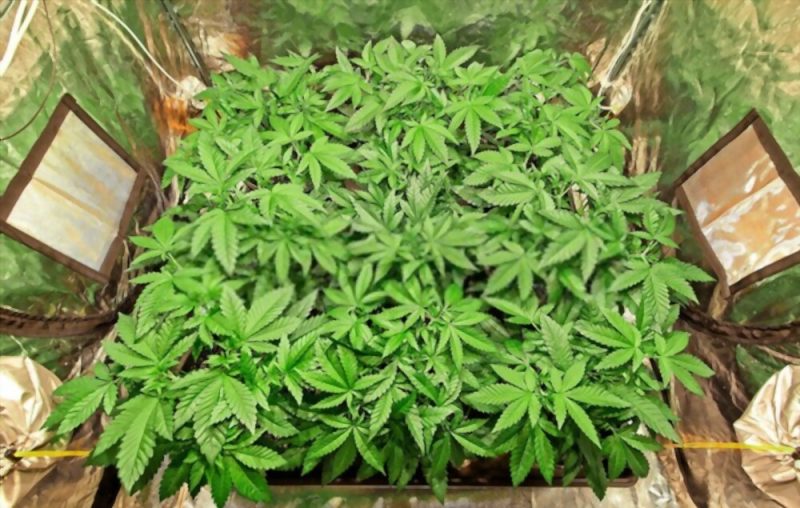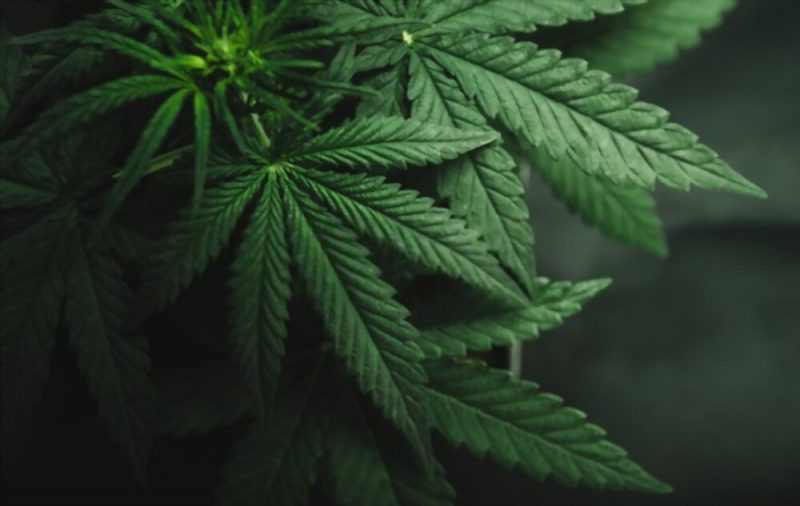🔥 Website for Sale - Contact Us
The Sea of Green Method is an indoor cannabis growing technique used to produce flowers in record time in tight spaces.
Does it sound too good to be true? Well, it isn’t, let me tell you more about it.
The sea of green method became popular amongst growers in the early 1980s because in those years cannabis was seen as a vicious drug that will destroy society.
Looking back in hindsight, this hysteria over cannabis seems pretty ridiculous. But nevertheless, the public misinformed perception combined with the legality of cannabis, pretty much-forced growers to make the best of hidden small spaces.
Today we are going to look at what this method entails to give a clear guideline on how to implement this concept in your next growth cycle.
What is the sea of green method?

Typically the term “sea of green” also known as the “SOG method” refers to a limited indoor cultivation area like a grow tent that is tightly packed with cannabis plants. Because of how these plants react to their environment, they form a dense fan leave canopy that closely resembles a green moving ocean.
This method is extremely popular amongst novice home growers and experienced cultivators alike because it requires fewer resources and approximately 2 to 4 weeks less growing time.
Amongst experience Sea of Green cultivators, the cost may even further reduce once the growing process is optimized.
The sea of green method is the idea to grow many smaller plants instead of a few bigger plants in the same confined growing space with the added benefit of shorter harvest turnover time.
The main concept of the idea is that the grower gets to harvest much sooner because the plants don’t need to grow as tall to support the same yields as a larger plant.
The process basically forces the plant from puberty to adulthood much earlier in the plants’ life cycle.
Reducing the time needed for the plant to reach full maturity can drastically increase production output.
This brings us back to the fact that because the plants mature while it’s still relatively small, it free’s up space for other plants in the grow tent.
Basically, it is a win-win when it comes to limited indoor growing space.
Another major advantage of using the SOG setup is that smaller plants don’t need plant training rigs which also cuts down on growing costs.
Plant training rigs are essential for larger plants to yield maximum capacity flowers. While these techniques deliver amazing results, it requires a patient steady hand that is time-consuming.
That said, packing your cannabis plants tightly like sardines has some drawbacks when it comes to keeping your plants in shape.
The most obvious drawback is the fact that more plants require more labor.
Another problem that is not obvious until the plant’s vegetation end-stage.
The sea of green eventually becomes so thick which makes any type of plant maintenance like watering extremely challenging, especially for the plants in the back of the tent.
Furthermore, another major cause of concern with plants standing snug to one other is that this arrangement has an increased chance of developing mold or mildew.
When placing cannabis plants in close proximity in small spaces like a grow tent, the environment leaves little room for ventilation which is the perfect condition for mold and mildew.
Mold and mildew generally start to appear because of poor ventilation throughout the grow space or badly controlled humidity levels.
Uncontrolled humidity levels in your grow space environment react similarly to the steam room in your local gym.
**
Without moving air to make the fan leaves dancing, deadly fungus like mold or mildew can easily breed in places where plant matter brushes up against one and another.
What are the best strains for “Sea of Green method” in a grow tent?
The biggest advantage of indoor over outdoor cannabis growing is the complete control over environmental stressors and climate conditions.
Growing cannabis in small indoor spaces can be challenging but is known to yield some of the best harvests.
While the typical indoor cannabis growth tent is approximately 2m tall, experienced growers can get amazing flower yields in only 1m vertical growth space.
However, not all cannabis strains are a good fit for a confined grow tent since some Sativa strains can reach up to 3m in height.
Multiple deciding factors can determine the size of the plant, but the biggest contributing factor depends on the perfect balance of autoflowering Indica and Sativa strain genetics.
Fortunately for us home grow enthusiasts some clever nerdy cannabis breeders scientists already paved the path to find the perfect indoor Sea of Green strain.
These genetically engineered plant strains remain short throughout their life cycle and require much less management and training efforts.
Reduce cultivation cost with the best cannabis strain
Apart from being more suitable for a small space like a tent, smaller cannabis strains greatly reduce the overall cost involved in cultivation.
Because these unique cannabis strains require less shoulder space, growers can easily increase the number of plants in the tent to ultimately harvest a much larger yield.
This revolutionary change in indoor marijuana led to more home grow enthusiasts experimenting on all sorts of inexpensive tent alternates like discarded computer towers, cupboards, and even wheely trash bins.
For marijuana newcomers and novelists alike, not having to spend hundreds of dollars on expensive equipment only to ever grow two to three plants at a time helped to popularize the notion of growing for personal use.
What types of seeds is the best for indoor growth?
The biggest challenge for indoor growers has always been getting the most out of limited growing space.
While all strains are suitable for growing indoors, some are much more efficient and less demanding when it comes to cramped spaces.
Although some strains are known for their great quality flower they are often much less flexible and can easily go into survival mode when their environment makes them unhappy.
While is environmental stressors are sometimes purposefully induced to make the plant develop feminized seeds, it is generally not a good idea because a female plant that carries seeds will produce a poor harvest.
Female plants can transform into a hermaphrodite when feeling that their life might hang in the balance which makes them redirect the plant growth from flowers to seed.
So, picking a resilient plant strain will also go a long way when it comes to harvest time.
Growers mostly aim to plant a strain that is bushier and rows sideways instead of in height like some Sativa plants that can reach up to 3m tall.
While there are multiple techniques to keep these genetically towering Sativa plant tiny, it will almost certainly result in poor harvest size and low-quality flowers.
Whereas bushy Indica and auto-flowering strains rarely outgrow the 1.2m mark which makes them the ideal Christmas tree and indoor marijuana plant.
Because these plants focus their energy to grow sideway they can be easily trained and pruned to occupy as little space as possible which is something all growers do regardless of the plant size or grow method.





